Expositie Pristine Minerals & Stapel van Stenen

Internationale Mineralenbeurs Rijswijk – 22 & 23 maart 2025
Voor de internationale mineralenbeurs in Rijswijk in maart 2025 hebben Ed van Pristine Minerals en Rolf van Stapel van Stenen een bijzondere expositie samengesteld met mineralen uit India en de pegmatieten van Afghanistan en Pakistan. Bekijk een video impressie van de tentoonstelling en lees de teksten met achtergrond informatie hieronder.
De mineralen in deze expositie laten zien hoe geologische omstandigheden bepalen welke mineralen op een bepaalde locatie gevormd worden. India staat wereldwijd bekend om de prachtige zeolieten die groeien in de holten van de oude lavalagen van de Deccan Traps. Uit de pegmatieten van Afghanistan en Pakistan komen unieke kristallen zoals aquamarijn, topaas en toermalijn.
Naast bekende soorten waren er ook minder voorkomende en unieke mineralen te bewonderen. Een must-see voor iedere mineralenliefhebber! Ben je geïnteresseerd in een mineraal dat voorbij komt? De stukken uit de expositie en meer van dit soort mineralen zijn te koop via de website van Pristine Minerals of hun Facebookpagina.
Mineralen uit India
India staat bekend om een enorme variëteit aan mineralen (maar liefst 663 geregistreerd in Mindat), waarvan vooral de secundaire mineralen uit de Deccan Traps wereldberoemd zijn. Dit uitgestrekte vulkanische gebied in het noordwesten van India bevat basaltlagen waarin holtes zijn gevormd, ideaal voor de groei van kristallen. Door de circulatie van hydrothermale vloeistoffen lossen mineralen in het vulkanisch gesteente op en deze kristalliseren later in de holtes wanneer het water afkoelt en verdampt.
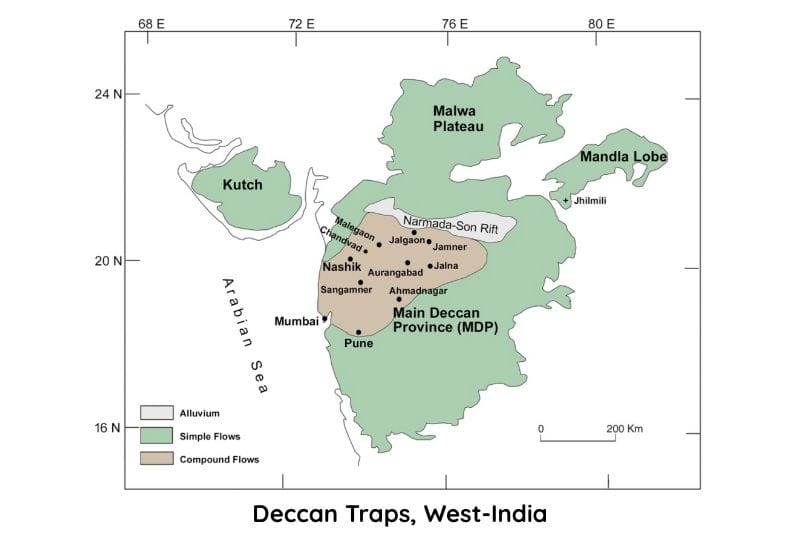
De bekendste mineralen uit het Deccan Traps gebied zijn zeolieten zoals heulandiet, mesoliet, scoleciet, stilbiet en thomsoniet, vaak in combinatie met apofylliet, prehniet, okeniet, calciet en kwarts. Ook treffen we hier een aantal bijzondere mineralen aan, zoals stelleriet en powelliet. En niet te vergeten de opvallend felblauwe cavansiet en pentagoniet uit Wagholi.
Naast de Deccan Traps herbergt India ook andere bijzondere mineralen van andere locaties, zoals amethist uit Karur en de zeldzame kwarts met hematietfantomen (“Sunset quartz“) uit Telangana. Deze unieke combinaties maken India tot een van de meest fascinerende landen voor mineralenliefhebbers en verzamelaars.
Zeoliet mineralen uit de Deccan Traps, India
Zeolieten behoren tot de tectosilicaten, een groep mineralen met een driedimensionaal netwerk van silicium-, aluminium– en zuurstofatomen. Deze atomen vormen viervlakken die samen een poreuze kristalstructuur creëren, bestaande uit kanalen en kooien. In deze ruimten bevinden zich watermoleculen en uitwisselbare ionen zoals natrium, calcium en kalium. Door deze unieke structuur kunnen zeolieten vocht opnemen en afstaan, en ionen uitwisselen. Bij verhitting verdampt het aanwezige water, wat de naam verklaart: zeoliet komt van het Griekse ζέω (zéō, “koken”) en λίθος (lithos, “steen”).
Zeolieten komen voornamelijk voor in vulkanisch gesteente, waar ze zich vormen als secundaire mineralen door de omzetting van al eerder aanwezig gesteente. Meestal ontstaan ze door de afzetting van opgeloste elementen uit hydrothermale vloeistoffen.
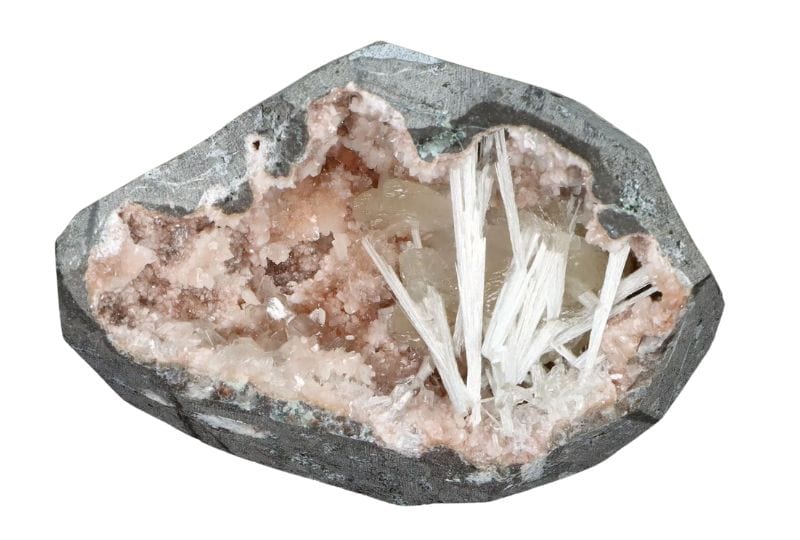
Er zijn ongeveer vijftig natuurlijke zeolieten bekend, naast ruim tweehonderd synthetische varianten. Bekende zeolieten uit het gebied van de Deccan Traps zijn onder andere stilbiet, heulandiet, chabaziet, thomsoniet, laumontiet, mordeniet, mesoliet en scoleciet. Ze groeien vaak samen met apofylliet, calciet, cavansiet, prehniet, gyroliet, kwarts en kleimineralen.
Bronnen:
- Ottens, B. (2024). India, the secondary minerals from the Deccan Volcanic Province. München: Christian Weise Verlag.
Mineralen uit pegmatieten
Pegmatieten ontstaan in de laatste fase van de stolling van magma, wanneer een groot deel van het gesmolten gesteente al is gekristalliseerd tot bijvoorbeeld graniet. Hierdoor blijven er in het resterende magma zeldzame elementen over zoals lithium, beryllium, niobium en tantalium, die niet in de eerder gevormde mineralen in de graniet passen. Door langzame afkoeling kunnen grote kristallen ontstaan, soms tot wel 10-15 meter lang.
Pegmatiet voorkomens zijn over het algemeen klein, meestal niet langer dan een paar honderd meter en vaak veel kleiner. Pegmatiet-lichamen vertonen vaak een mineralogische zonering, waarbij de samenstelling en grootte van mineralen verandert van de buitenkant naar de kern.
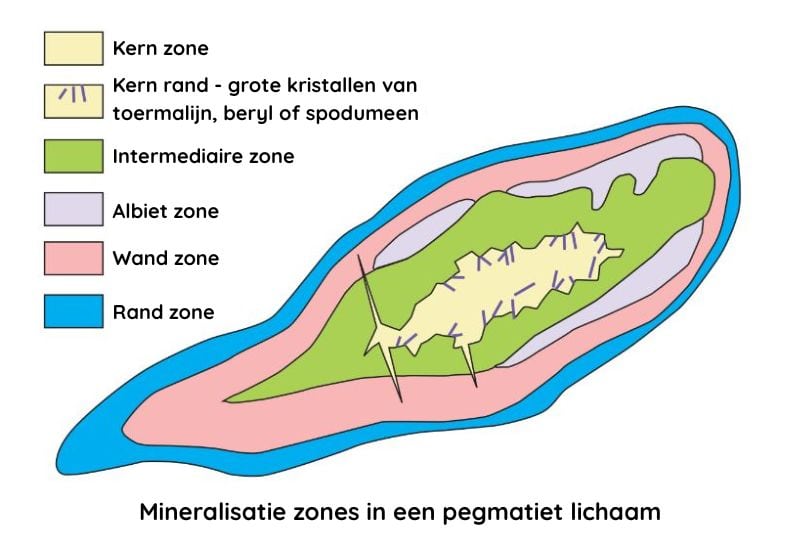
De buitenste randzone is meestal fijnkorrelig (graniet) en slechts enkele centimeters dik. Hierna volgt de wandzone van enkele meters dik, waar de kristallen veel groter kunnen worden, soms tot wel 30 cm lang. Deze zone bevat vaak veel kwarts, veldspaat en mica, met soms beryl en toermalijn. In de intermediaire zone groeien de kristallen nog groter en kunnen ook zeldzame mineralen zoals beryl, spodumeen, toermalijn, columbiet, polluciet en lithiumhoudende fosfaten voorkomen. De kern van veel pegmatieten bestaat bijna volledig uit kwarts.
Mineralen uit de pegmatieten van Noord-Afghanistan
Noord-Afghanistan, met name de regio’s Nuristan, Badakhshan en Laghman, herbergt enkele van de rijkste pegmatietvelden ter wereld. Belangrijke vindplaatsen zijn Paprok, Pech Valley en Nilaw-Kulam, waar talloze edelstenen en zeldzame mineralen voorkomen.

Opvallende vondsten zijn aquamarijn, morganiet, roze en groene toermalijn (elbaïet), kunziet, topaas, fluorapatiet, polluciet, columbiet, berylloniet en spessartien. Pegmatieten in deze regio vertonen duidelijke mineralogische zonering, waarbij de binnenste zones vaak lithium houdende mineralen en fosfaten bevatten.
Paprok staat bekend om diepgekleurde toermalijn, terwijl Pech Valley grote kristallen van kunziet en morganiet levert. Nilaw-Kulam is bekend van columbiet, een belangrijke bron van niobium.
Bronnen:
- Afghanistan Geological Survey (z.d.). Minerals in Afghanistan. [online: https://nora.nerc.ac.uk/id/eprint/10924/1/RareMetals_A4.pdf]
- Bariand, P., & Poullen, J. (2017). Rare metals and minerals in Afghanistan. Mineralogical Record, 48(5), 765-784.
- Kazmi, A. H., & Snee, L. W. (2015). Pegmatites of Afghanistan: Geological setting, mineralogy, and economic potential. Arabian Journal of Geosciences, 8(9), 6251-6270.
- Weise, C. (2003). Edle Steine vom Dach der Welt: extraLapis No. 24 – Afghanistan und Pakistan. Christian Weise Verlag, München.
Mineralen uit de pegmatieten van Noord-Pakistan
De belangrijkste pegmatietafzettingen in de regio Gilgit-Baltistan bevinden zich in de Hunza-vallei, het Haramosh-gebergte en de Shigar-vallei. Deze pegmatieten dringen door in oudere metamorfe gesteenten van het Karakoram Metamorphic Complex (KMC). Geologisch gezien zijn deze pegmatieten gerelateerd aan de botsing tussen de Indiase en Euraziatische plaat en de vorming van de Himalaya. De ouderdom van deze pegmatieten varieert tussen 1 en 23 miljoen jaar. Ze worden gekenmerkt door hun rijke mineraalinhoud en zijn economisch belangrijk.

In deze regio zijn aquamarijn, morganiet, gosheniet, kleurloze tot gele topaas, groene en roze fluoriet, toermalijn, granaat en fluorapatiet gevonden, meestal in combinatie met kwarts en veldspaat. Naast de pegmatieten zelf zijn er ook alpiene spleetmineralisaties aanwezig, waarin kwarts, axiniet en epidoot kunnen voorkomen.
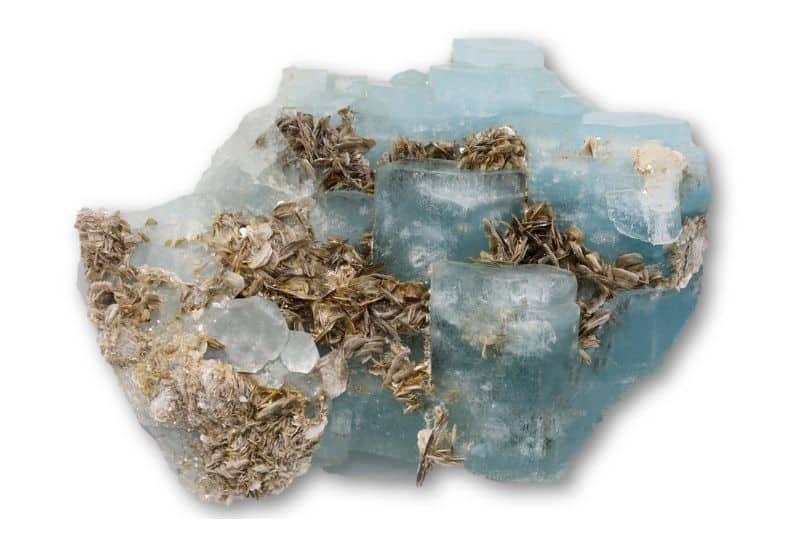
Bronnen:
- Agheem, H. (2015). Petrogenetic evolution of pegmatites in the Shigar Valley, Karakoram, North Pakistan. Arabian Journal of Geosciences. [Online: https://www.researchgate.net/publication/275521468_Petrogenetic_evolution_of_pegmatites_of_the_Shigar_Valley]
- Weise, C. (2003). Edle Steine vom Dach der Welt: extraLapis No. 24 – Afghanistan und Pakistan. Christian Weise Verlag, München.
Zeldzame mineralen uit de pegmatieten van Afghanistan en Pakistan
Naast de bekende edelstenen bevatten de pegmatieten van Afghanistan en Pakistan ook een scala aan zeldzame mineralen, vaak rijk aan elementen zoals tantaal, cesium, niobium, tin, lithium en fosfor.
Een belangrijk voorbeeld is columbiet, een van de meest voorkomende niobium-houdende mineralen in deze regio. Veel van de als “tantaliet” aangeduide specimens uit deze regio’s blijken na analyse overigens columbiet te zijn.

Ook zeldzame fosfaten komen voor, zoals eosphoriet, een ijzer-mangaanfosfaat dat voorkomt in de intermediaire zones van pegmatieten, vaak in combinatie met andere fosfaten.



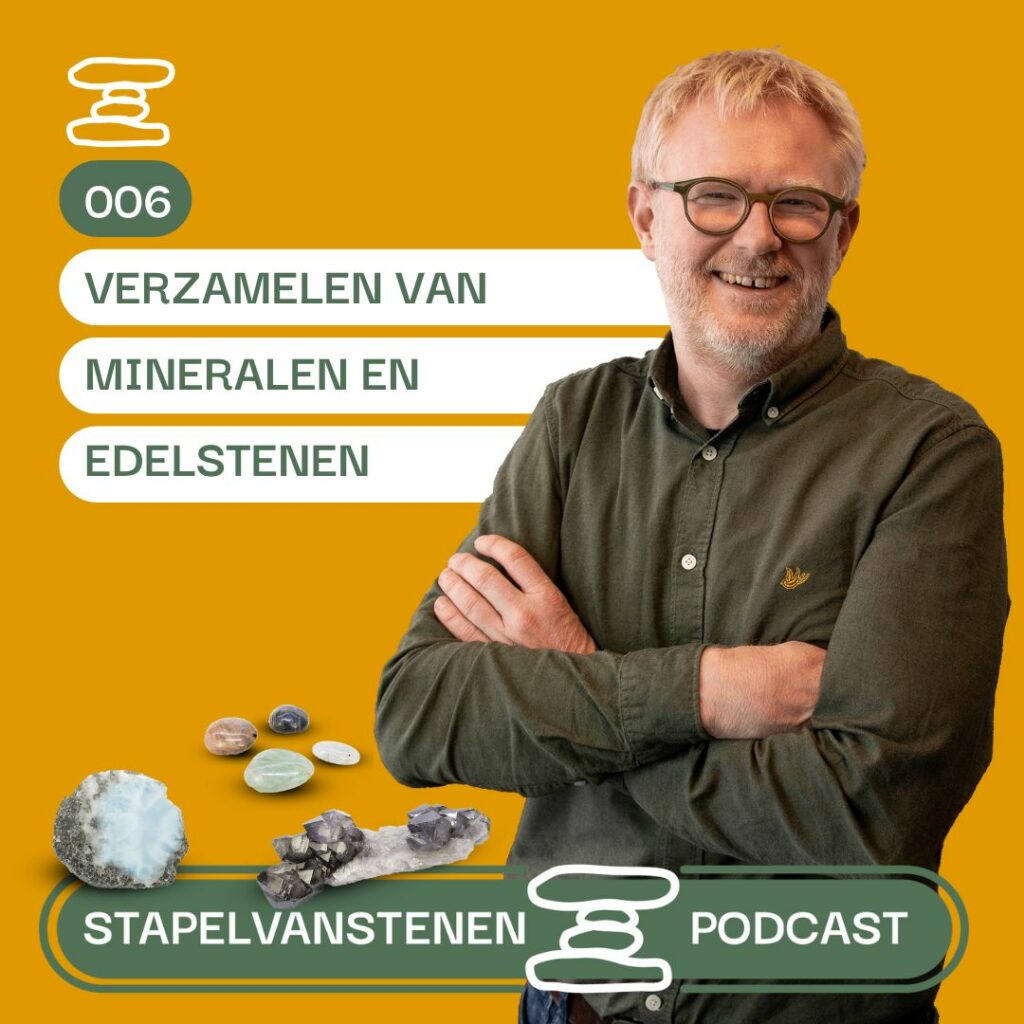

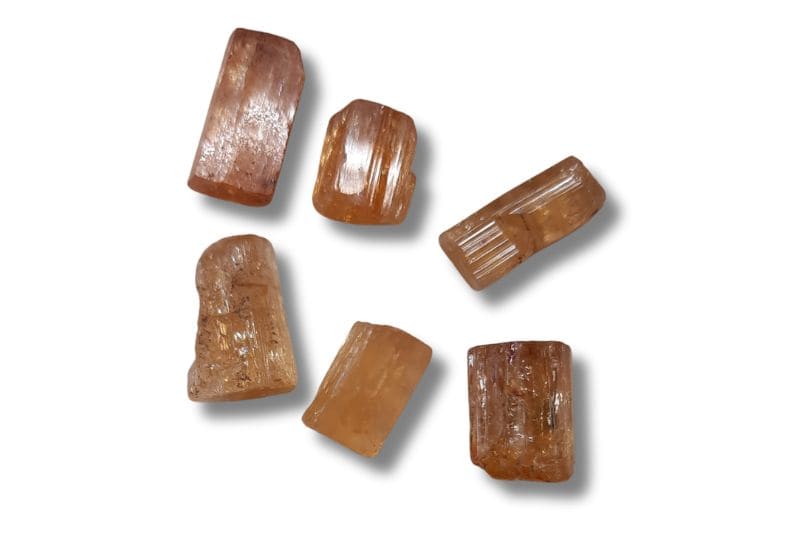

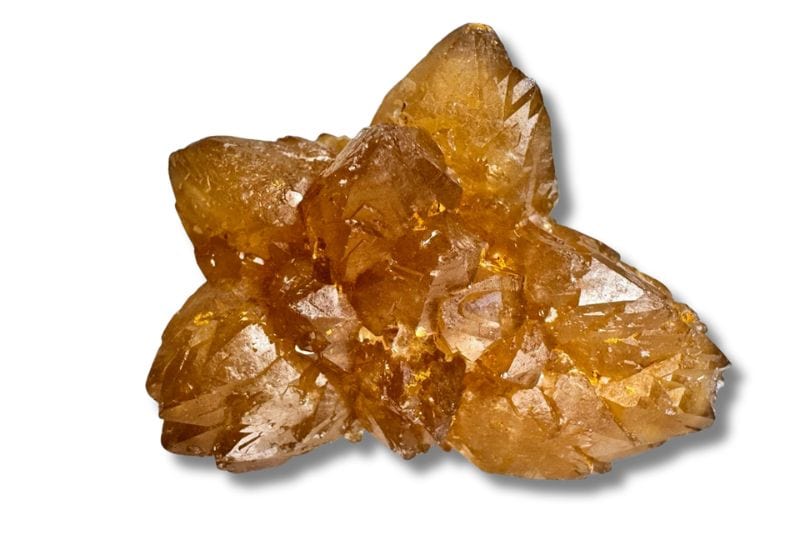
Reacties